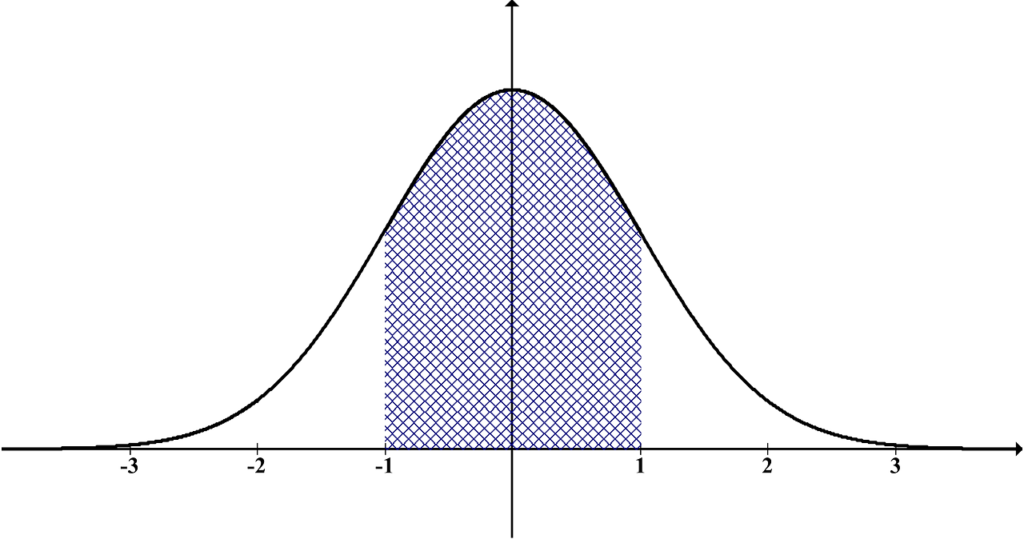
Binomial Distribution
I. Definition and Properties of Binomial Distribution
The binomial distribution is a discrete probability distribution that models the number of successes in a fixed number of independent Bernoulli trials. In this section, we will explore the properties of the binomial distribution and understand how it can be applied in various research scenarios.
Definition of Binomial Distribution
The binomial distribution is characterized by two parameters: the number of trials, denoted as “n,” and the probability of success in each trial, denoted as “p.” The random variable X follows a binomial distribution if it represents the number of successes in the n trials.
The probability mass function (PMF) of the binomial distribution is given by the formula:
P(X = k) = C(n, k) * p^k * (1-p)^(n-k)
Where:
- P(X = k) represents the probability of getting exactly k successes in n trials.
- C(n, k) is the binomial coefficient, which represents the number of ways to choose k successes from n trials.
- p^k represents the probability of k successes.
- (1-p)^(n-k) represents the probability of (n-k) failures.
Properties of Binomial Distribution
Fixed Number of Trials: The binomial distribution assumes a fixed number of independent trials, denoted as “n.” Each trial has two possible outcomes: success or failure.
Independent Trials: The trials in a binomial distribution are assumed to be independent of each other. The outcome of one trial does not affect the outcome of subsequent trials.
Constant Probability of Success: The probability of success, denoted as “p,” remains constant for each trial. This assumption allows us to model real-world scenarios where the probability of success remains consistent.
Discrete Distribution: The binomial distribution is a discrete probability distribution, meaning that the random variable X can only take on integer values.
Range of Values: The random variable X in a binomial distribution can take on values from 0 to n, where n is the number of trials. The probability of each value is calculated using the binomial PMF formula.
Mean and Variance: The mean (μ) of a binomial distribution is given by μ = n * p, and the variance (σ^2) is given by σ^2 = n * p * (1-p). These formulas allow us to calculate the expected value and measure the spread of the distribution.
Skewness and Kurtosis: The skewness and kurtosis of a binomial distribution depend on the values of n and p. As n increases and p approaches 0.5, the distribution becomes more symmetric and approaches a normal distribution.
II. Applications of Binomial Distribution
The binomial distribution is a discrete probability distribution that models the number of successes in a fixed number of independent Bernoulli trials. It is characterized by two parameters: the number of trials, denoted as “n,” and the probability of success in each trial, denoted as “p.” In this section, we will explore the applications of the binomial distribution in various research scenarios.
Quality Control
One of the key applications of the binomial distribution is in quality control. In manufacturing processes, it is often necessary to assess the quality of a product by inspecting a sample. The binomial distribution can be used to determine the probability of finding a certain number of defective items in the sample.
For example, let’s consider a scenario where a company produces light bulbs, and the probability of a bulb being defective is 0.05. If a sample of 100 bulbs is randomly selected, we can use the binomial distribution to calculate the probability of finding a specific number of defective bulbs in the sample. This information can help the company make decisions about the quality of their products and take appropriate actions to improve their manufacturing process.
Opinion Polls
Opinion polls are another area where the binomial distribution finds application. When conducting a survey to estimate the proportion of a population that holds a particular opinion, the binomial distribution can be used to calculate the probability of obtaining a certain number of individuals with that opinion.
For instance, suppose a political analyst wants to estimate the proportion of voters who support a particular candidate. They conduct a survey of 500 randomly selected voters and find that 60% of them support the candidate. By using the binomial distribution, the analyst can determine the probability of observing this proportion of supporters in
the sample. This information can help in making predictions about the candidate’s chances in an election.
Genetics and Inheritance
The binomial distribution is also relevant in genetics and inheritance studies. It can be used to analyze the probability of
certain genetic traits being passed on from parents to offspring.
For example, let’s consider a genetic trait that follows a simple dominant-recessive pattern. If a parent carries the dominant allele, there is a 75% chance that their offspring will inherit the trait. By using the binomial distribution, researchers can calculate the probability of a specific number of offspring inheriting the trait in a given sample size. This information can aid in understanding the inheritance patterns of genetic traits and predicting the likelihood of certain traits appearing in future generations.
Sports Analytics
In the field of sports analytics, the binomial distribution is often used to analyze the outcomes of sporting events and evaluate the performance of athletes or teams.
For instance, in a basketball game, the probability of a player making a free throw can be modeled using the binomial distribution. By knowing the player’s success rate and the number of free throws attempted, analysts can calculate the probability of the player making a specific number of successful shots. This information can help coaches make strategic decisions during games and assess the performance of individual players.
Risk Assessment
The binomial distribution is also valuable in risk assessment and decision-making processes. It can be used to estimate the probability of a specific number of events occurring within a given time frame.
For example, in insurance, the binomial distribution can be employed to assess the probability of a certain number of claims being filed within a year. This information helps insurance companies determine appropriate premium rates and manage their risk exposure.
A/B Testing
A/B testing is a common technique used in marketing and web development to compare the effectiveness of two different versions of a product or website. The binomial distribution plays a crucial role in analyzing the results of A/B tests. By randomly assigning users to either version A or version B, researchers can use the binomial distribution to calculate the probability of observing a specific number of conversions or successes in each group. This information helps in determining which version performs better and making data-driven decisions to optimize the product or website.
The binomial distribution has a wide range of applications in research. From quality control and opinion polls to genetics and sports analytics, the binomial distribution provides a valuable tool for analyzing discrete outcomes and making informed decisions based on probability. Understanding its applications can enhance the researcher’s ability to analyze data and draw meaningful conclusions in various fields of study.
